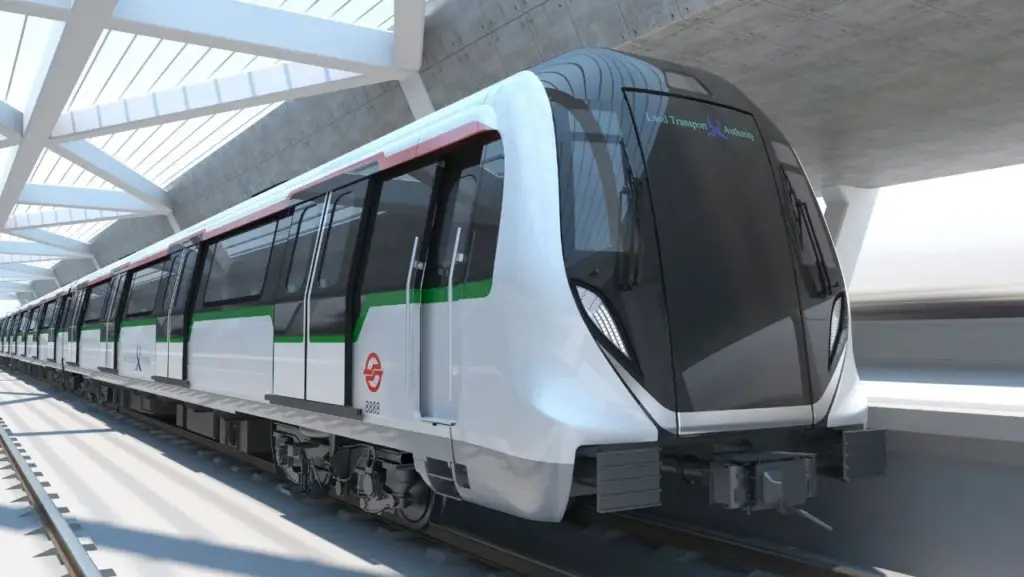Singapore, often labeled the ‘world’s most expensive city,’ presents a unique blend of luxury and practicality, with its high cost of living influenced by various factors. From the prohibitive expenses of owning a car to the premium placed on the property and the high salaries that drive the economy, what makes Singapore so successful, and how it has reached this stage?
Key Takeaways
- Owning a car in Singapore is extremely expensive due to deliberate government policies aimed at controlling vehicle growth.
- Singapore’s public transport system offers a more affordable alternative, highlighting the city’s efficient and extensive network.
- The high cost of living in Singapore is influenced by its status as a global financial hub and the resulting high salaries.
- Government assistance and social programs help mitigate the impact of living costs for the needy, despite the city’s expensive reputation.
- Singapore’s property market is among the priciest, with sky-high prices that rival those of cities like Hong Kong.
Why Is Singapore So Expensive
Because of tight restrictions on car numbers, the Republic kept seeing high pricing levels in a number of categories, most notably transportation. “Due to its success as a premier location for business investment, it is also among the most expensive cities for clothing, groceries, and alcohol,” according to EIU.
The High Cost of Mobility in Singapore

Prohibitive Expenses of Owning a Car
In Singapore, the dream of owning a car comes with a hefty price tag. The government has implemented a series of measures to control the growth of vehicle numbers, aiming to reduce pollution and congestion. This has led to a complex system of taxes and fees that can make car ownership seem out of reach for many.
A new compact car costs around $100,000. Based on the same car, Singapore car prices in 2021 are up to 4 times more expensive than; Australia (US18,770), up to 5.5 times more than China (US 20,725), and 5 times more expensive than America (US 21,845)
The cost of acquiring a car in Singapore is not just about the sticker price; it involves a multitude of additional expenses. Prospective car owners must navigate the Additional Registration Fees (ARF), which can range from 100% to 220% of the car’s Open Market Value (OMV).
Moreover, the Certificate of Entitlement (COE), which is required to drive a car on Singapore’s roads, is subject to a bidding process that can significantly inflate the overall cost.
The financial burden of owning a car in Singapore is further compounded by maintenance fees, insurance, and fuel costs, making it a luxury rather than a necessity.
Here’s a snapshot of the costs associated with car ownership in Singapore:
| Expense Type | Description |
|---|---|
| ARF | Up to 220% of the car’s OMV |
| COE | Bidding price varies bi-monthly |
| Maintenance | Regular servicing and repairs |
| Insurance | Mandatory for all vehicles |
| Fuel | High prices compared to other countries |
Ouch right! Although Singapore can be quite expensive to own a car, our country believes that the 5Cs(Condo, credit card, cash, car, company) keep us addicted to pursuing more to increase our income.
Public Transport: A More Affordable Alternative
In the face of prohibitive car ownership costs, Singapore’s public transport system emerges as a beacon of affordability. The city-state boasts an extensive and efficient network of buses and trains, including the Singapore Metro (SMRT), which operates from early morning until midnight. With an average fare of just 1 SGD, residents and visitors alike can traverse the city comfortably and economically.
Despite the high cost of living, the affordability of public transport is a silver lining for many. A taxi ride from the central business district to the airport, for example, is surprisingly affordable at around 20 SGD, hinting at a possible government subsidy for transport services. This affordability extends to daily commuting costs, with travelers spending an average of 11 SGD per person per day on local transportation.
While any increase in public transport fares can stir discontent, especially during times of high inflation, the current system provides a viable and cost-effective alternative to private vehicle ownership.
For those looking to supplement their income, engaging in side hustles has become a common practice among young Singaporeans, providing additional financial relief in an expensive urban environment.
Government Measures to Control Vehicle Growth
In response to the challenges of high population density and limited land, Singapore has implemented a series of stringent measures to control vehicle growth. The Certificate of Entitlement (COE) system is a cornerstone of this approach, effectively capping the number of vehicles on the road. Car buyers must bid for a COE, which grants the right to vehicle ownership for a maximum of 10 years. The cost of a COE can be substantial, often exceeding the price of the vehicle itself.
To further discourage car ownership, the Additional Registration Fee (ARF) imposes duties ranging from 100% to 220% of the vehicle’s Open Market Value (OMV). This, combined with the Singapore Green Plan 2030’s push to electrify the vehicle population, aims to transition towards cleaner energy vehicles.
The adoption of the Worldwide Harmonised Light Vehicle Test Procedure (WLTP) aligns Singapore with international standards, ensuring a more accurate measurement of vehicle emissions.
The government’s zero car-growth policy, introduced to manage congestion in the compact city state, is another significant measure. It limits the number of new vehicles, thereby controlling the total vehicle population. These policies reflect Singapore’s commitment to a sustainable urban environment, balancing the need for mobility with the imperative of reducing pollution and congestion.
Living in the World’s Most Expensive City

Singapore’s Position in Global Cost of Living Indexes
Singapore’s reputation as a costly city is well-documented in various global cost of living surveys. Singapore and Zurich have consistently topped the rankings, reflecting the city-state’s high expenses across multiple sectors. The Economist Intelligence Unit’s Worldwide Cost of Living survey has frequently placed Singapore at the pinnacle, highlighting its position as one of the priciest places to live for several years.
The cost of living in Singapore is influenced by its status as a global financial hub and a prime tourist destination, which drives up prices for residents and visitors alike.
The table below showcases Singapore’s ranking in recent years according to the Worldwide Cost of Living survey:
| Year | Ranking |
|---|---|
| 2018 | 1st |
| 2019 | 1st |
| 2020 | 1st |
| 2021 | 1st |
| 2022 | 1st |
| 2023 | 1st |
While the high cost of living can be daunting, it is also indicative of the city’s economic success and the high quality of life that many residents enjoy.
Impact of High Salaries on the Local Economy
In Singapore, high salaries have a significant impact on the local economy, influencing both the cost of living and the market dynamics. Businesses in Singapore are shifting away from commercial real estate due to the high costs, with some opting for alternative marketing strategies such as influencer marketing. This trend is reflected in the performance of Real Estate Investment Trusts (REITs), which have seen a decline of over 10% with no signs of recovery post-pandemic.
Despite the economic uncertainty, Singapore’s household net worth remains robust, with a substantial portion allocated to housing. In 2022, over 40% of household net worth was tied to real estate, and an impressive 90% of residents owned their homes. This demonstrates the continued confidence in the property market and the prevalent investment strategies.
The salary growth for Singapore’s middle-income workers has been notable, with the Monetary Authority of Singapore reporting the greatest increases in recent years. However, the outlook remains uncertain, especially considering the real median wage has fallen by 2.3% this year due to lingering inflation, and lower earners have experienced a 3% drop in real income.
The high salaries in Singapore not only affect the cost of living but also create a disparity with neighboring countries. Residents often find themselves in a bubble of affluence within Southeast Asia, where stepping outside of Singapore can dramatically increase their purchasing power.
Government Assistance and Social Programs
Despite the high cost of living, the Singapore government has implemented a range of assistance programs to support its citizens. These initiatives are designed to alleviate the financial burden on lower-income families and ensure that the basic needs of all residents are met.
For instance, the government provides subsidies for households with seniors requiring home modifications for safety, such as grab bars and slip-resistant treatments. Additionally, there are financial aids for school fees and other educational expenses for children from lower-income families.
The government’s approach to social welfare is proactive, with a focus on long-term economic resilience and support for the vulnerable segments of society.
Singapore’s social safety net extends to healthcare, with heavily subsidized medical care at government hospitals and rebates for public transport and utility bills. The effectiveness of these measures, such as CDC vouchers and lump sum payments, is often debated, particularly in light of GST hikes. However, they play a crucial role in cushioning the impact of living expenses for those in need.
Dichotomy of Affordability and Luxury

Finding Value in Singapore’s Expensive Landscape
Despite the high cost of living, Singapore offers avenues for value amidst its expensive backdrop. Key factors to consider in property investment include pricing, holding power, and the developer’s track record. For those looking to invest, areas like Clementi are highly sought after due to their future potential and high rental demand.
While Singapore’s reputation as a costly city precedes it, there are pockets of affordability that can be surprising to visitors and residents alike.
Accessibility and the maturity of supply chains are crucial for successful property ventures. It’s not just about the property type or location; tenure and fees also play a significant role in determining value. Here’s a quick list of considerations for finding value in Singapore’s property market:
- Pricing and holding power
- Tenants and developer’s track record
- Emotional state of the buyer
- Type, location, and tenure of property
- Fees associated with property purchase
The Contrast Between Local and Expatriate Lifestyles
In Singapore, the cost of living can vary significantly between locals and expatriates. Expatriates often face higher living expenses, particularly when seeking accommodations that match their lifestyle expectations from home. For instance, living in the Central Business District (CBD) can cost an expatriate between $4,000 to $6,000 for a one-bedroom apartment, with two bedrooms starting at $5,000.
Locals, on the other hand, may opt for more affordable housing options outside the city center, benefiting from government housing grants and subsidies. The dichotomy extends beyond housing to everyday expenses, where expatriates might prioritize international brands and dining at upscale restaurants, while locals often enjoy local hawker centers and shopping at heartland malls.
While expatriates may gravitate towards the cosmopolitan offerings of Singapore, locals have developed a knack for finding value without compromising on quality of life.
The lifestyle choices in Singapore also reflect in the activities and quality of life. For example, many Singaporeans find value in retiring to places like Bali, which offers a more relaxed lifestyle and lower cost of living, while still providing a range of activities.
Green Spaces as a Counterbalance to Urban Expenses
In the midst of its urban landscape, Singapore has carved out an oasis of tranquility with its green spaces serving as a vital counterbalance to the city’s high cost of living. These areas are not only a testament to innovative urban planning but also provide numerous economic and health benefits. For instance, the government’s initiative to plant 1 million new trees by 2030 aims to ensure that no citizen is more than a 10-minute walk from lush greenery, fostering a green revolution within the city state.
Singapore’s commitment to green spaces is evident in its diverse commercial properties, which cater to sectors such as retail, food, and entertainment, all while supporting the city’s sustainability goals.
The value of green spaces extends beyond aesthetics and leisure; they are crucial for environmental health and community well-being. Parks improve water quality, manage stormwater, and reduce air pollution. Moreover, they offer recreational opportunities that enhance community health and contribute to the economy.
For children, the presence of urban green spaces is indispensable. These areas significantly benefit their physical, mental, and social development, supporting a healthy progression into adulthood. Singapore’s dedication to integrating nature within its urban fabric not only enriches the lives of its residents but also sets a global standard for sustainable city living.
Singapore’s Economic Success and Its Price Tag

Singapore’s ascent as a global financial hub is a testament to its strategic location and robust economic policies. The city-state’s economy thrives on a high concentration of financial services, including a significant presence of insurance companies and multinational corporations. Personal insurance products, such as life and critical illness coverage, are particularly popular, reflecting the nation’s focus on financial security.
As the Monetary Authority of Singapore (MAS) continues to develop key areas, the goal is to establish Singapore as the preeminent financial center in Asia. This includes becoming a global hub for end-to-end risk financing solutions. The MAS’s initiatives have positioned Singapore as a crucial link between East and West, enhancing its role in the global economy.
Despite its small market size, Singapore offers a stable political environment, a diversified economy, advanced infrastructure, and an attractive tax environment for investors. These factors contribute to its AAA sovereign credit rating, the only country in Asia to hold this distinction from all major rating agencies. However, Singapore must navigate the challenges posed by its vulnerability to global economic trends.
High Costs Associated with Prime Tourist Destinations
Singapore’s allure as a prime tourist destination comes with a hefty price tag for visitors. The city-state’s reputation for luxury and quality services in tourism means that expenses can quickly add up. From accommodation to dining, and entertainment, the cost of experiencing Singapore’s finest is significant.
- Accommodation: Premium hotels and resorts
- Dining: High-end restaurants and exclusive dining experiences
- Entertainment: Entry fees to attractions and events
For instance, the cost of event videographers in Singapore can vary greatly, reflecting the city’s premium on specialized services. Rates for capturing your memories professionally can range from SGD 500 to over SGD 3,500, depending on various factors such as event duration and expertise level.
While the high costs can be daunting, savvy tourists can find ways to save. Exploring free attractions, using public transport, and choosing budget-friendly options can help mitigate expenses.
The influx of tourists, including big-spending Singaporeans in neighboring regions like Johor Bahru, is indicative of the city’s economic impact. Their stronger currency allows them to seek value across the border, enjoying good food and shopping for less. Meanwhile, flight prices to Singapore fluctuate, with some seasons offering more affordable travel options than others.
Singapore’s Sovereign Credit Rating and Its Implications
Singapore’s AAA sovereign credit rating from all major rating agencies underscores its economic stability and financial reliability. This prestigious rating reflects the nation’s strong fiscal policies and the government’s commitment to maintaining a robust economic framework. Commercial businesses must consider operating costs, legal and tax implications in Singapore. Proper management is crucial for profitability and accessing government grants.
Singapore’s credit rating not only influences its borrowing costs but also affects investor confidence and the country’s attractiveness for foreign investment. The rating serves as a testament to Singapore’s dynamic and business-friendly environment, which has been pivotal in attracting a significant amount of foreign investment.
Elections and global economic shifts can introduce volatility, potentially impacting sovereign credit ratings. Reports suggest that elections may bring more risks than usual to Asian government ratings in 2024, indicating that even stable economies like Singapore are not immune to geopolitical and economic changes. The resilience of Singapore’s credit rating will continue to be a key factor for investors and policymakers alike.
Navigating Singapore’s Property and Rental Markets

Sky-High Property Prices in Urban Centers
In the heart of Singapore’s urban sprawl, the property market is a testament to the city’s economic vitality. Despite global economic headwinds, property prices in Singapore’s urban centers remain resilient, often reaching new heights each year. This phenomenon is particularly perplexing given recent trends indicating a cooling market.
| Year | Average Price (SGD) | % Change |
|---|---|---|
| 2021 | 1,500,000 | +2.5% |
| 2022 | 1,550,000 | +3.3% |
| 2023 | 1,600,000 | +3.2% |
The table above succinctly captures the upward trajectory of property prices over the past few years. Despite a falling demand and the introduction of market-cooling measures, the cost of owning a home in Singapore’s prime locations continues to climb. This trend is echoed in the snippets of information gathered, highlighting the resilience of Singapore’s housing market.
The relentless rise in property prices poses a significant challenge for those aspiring to own a home in Singapore. It reflects a complex interplay of supply constraints, robust demand from certain buyer segments, and the city-state’s unwavering appeal as a place to live and work.
Aaron Oon is a Senior Associate Director at Propnex and Founder of Real Estate Insider. A consistent Top Producer in the competitive world of real estate, Armed with a Finance degree from NUS, Aaron is more than just a real estate agent; he’s a strategic thinker and a creative problem solver.
If you are looking to invest in a property here in Singapore or would like to know more about Singapore’s property market. Be sure to reach out through the Calendy video link below:

The Ultimate Guide to Finding Accommodation
Finding the right accommodation in Singapore can be a daunting task, especially given the city’s reputation for high rental prices. However, with a strategic approach, it’s possible to navigate the market effectively. Here are some key steps to consider:
- Research the different neighborhoods to find one that suits your lifestyle and budget.
- Utilize online property portals and consider engaging estate agents to widen your search.
- Understand the legal requirements and prepare the necessary documents in advance.
- Be ready to act quickly when you find a suitable place, as the market moves fast.
While the process may seem overwhelming, remember that many have successfully found their ideal home in Singapore by staying informed and proactive.
For those looking to invest in rental property, it’s crucial to consider factors such as location, potential rental yield, and the economic stability of the area. Singapore offers a variety of options, from bustling city centers to quieter residential neighborhoods.
Comparing Housing Woes: Singapore vs. Hong Kong
When it comes to the cost of living, housing is often the most significant expense for individuals. Singapore and Hong Kong are notorious for their steep rental costs, with both cities frequently appearing at the top of global cost of living rankings. A comparison of these two Asian financial hubs reveals a competitive real estate market where prices are influenced by various economic factors.
In recent times, both cities have faced challenges that impact the property market. High interest rates and economic headwinds have led to predictions of declining residential property prices. Despite this, the rental market remains less affected, as individuals opt to rent amidst uncertain economic conditions.
The dynamics of the housing market in Singapore and Hong Kong are complex, with fluctuations in property prices not always translating to similar changes in the rental sector.
Here’s a quick snapshot of the current situation:
| Aspect | Singapore | Hong Kong |
|---|---|---|
| Consumer Prices (w/o rent) | Higher | Lower |
| Housing Rent | Expensive | More Expensive |
| Property Price Predictions | Decline Expected | Decline Expected |
| Economic Factors | High Interest Rates | Bad Economic Results |
Understanding these trends is crucial for anyone considering relocation or investment in these cities.
Is Singapore livable?
Despite Singapore being one of the most expensive countries in the world, the efficient public transport system offers a more affordable alternative, highlighting the balance between expense and quality of life.
Singapore’s high living standards, coupled with its strong economic performance and social indicators such as education, healthcare, and safety, reflect the premium costs associated with residing in this global financial hub.
While the cost of living may be high, the government’s assistance programs and the availability of affordable options in certain sectors, like dining, demonstrate that Singapore’s expensive reputation is nuanced and can be mitigated by the choices residents and visitors make.
Frequently Asked Questions
Is Singapore really the world’s most expensive city?
Singapore has consistently been ranked as one of the most expensive cities to live in. According to the Economist Intelligence Unit, it was rated the world’s most expensive city for several consecutive years, including 2016 and 2018. Factors contributing to this include high costs of housing, transportation, healthcare, and Singapore’s status as a global financial hub and prime tourist destination.
Do you need a car in Singapore?
Owning a car in Singapore is considered prohibitively expensive due to government measures to control vehicle growth and keep the number of cars low. However, most residents find little need for a car thanks to Singapore’s extensive and convenient public transport system, which is a more affordable alternative to car ownership.
Can you find affordable meals in Singapore?
Despite its reputation as an expensive city, it is possible to find meals under US$5 in Singapore. The city offers a range of dining options, from luxury restaurants to local hawker centers, where affordable and delicious meals can be enjoyed.
How do high salaries in Singapore impact the local economy?
Salaries in Singapore are significantly higher than those in surrounding Southeast Asian countries, which impacts the local economy by increasing the cost of living. This salary bubble means that residents often experience a higher standard of living within Singapore and can afford a more luxurious lifestyle when traveling to neighboring countries.
What is the state of green spaces in Singapore?
Singapore is known for balancing urban development with green spaces. There is plenty of greenery around the city, with various parks and gardens that provide residents with a counterbalance to the urban expenses and serve as areas for recreation and relaxation.
How does Singapore’s sovereign credit rating affect its economy?
Singapore is the only country in Asia with a AAA sovereign credit rating from all major rating agencies. This high credit rating reflects the country’s economic stability and attractiveness to investors, contributing to its reputation as a global financial hub and affecting the cost of living and business operations within the city.





